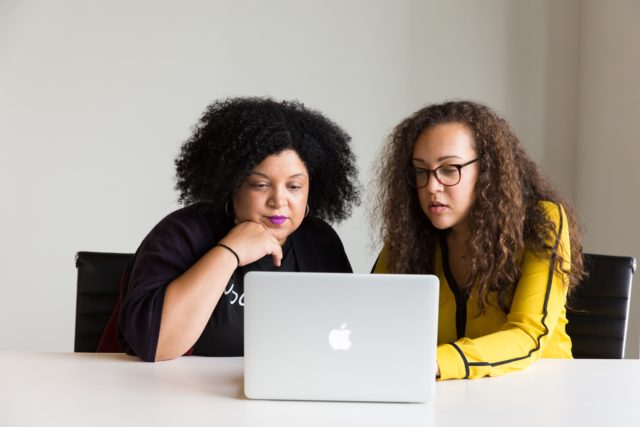How can one best give an honest apology? It is no surprise that apology is a very complex subject. The common situations that require one to give an honest apology are often emotionally overheated and almost always involve some sort of conflict. Some people are inclined to avoid admittance of wrongdoing at all costs while others seem to apologize too frequently, leaving the recipient wondering if the apology meant anything at all.
Additionally, the number of meanings someone can take away from an apology are vast, which makes apologizing even more complicated. It is likely you have experienced the complex nature of apology when debating whether you should give an apology for something that happened with a friend or when you receive an apology that you are not quite sure how to feel about.
How do we detangle the complex nature of apology? If we want to properly give an honest apology, we must first differentiate between the various types of apologies.
The 5 Types of Apologies
The following types of apologies are adapted from Peter Robinson’s (2019), Apology, Forgiveness, and Reconciliation for Good Lawyers and Other Peacemakers. In this book, Robinson (2019) pinpoints two primary variables to consider when giving an apology: (1) the degree to which the apologizer acknowledges their behavior hurt someone and (2) the degree to which the apologizer believes what they did was wrong.
The following types of apologies reflect how people tend to vary in their degrees of acknowledging they hurt someone and feel what they did was wrong.
Remorse Apology
When people think of giving an honest apology, a remorse apology is often what they are thinking of. A remorse apology requires that the apologizer fully acknowledges their behavior hurt another and believe their hurtful behavior was wrong. An example of a situation in which someone might give a remorse apology is spilling a drink on someone because they weren’t aware of their surroundings. A more solemn example could be getting into a car accident due to lack of attention on the road.
A remorse apology could sound something like, “I am sorry for (specific behavior). I recognize that I hurt you and I feel remorse for (specific behavior).” Here, the apologizer apologizes for their specific behavior that hurt the other person and expresses remorse for the injury inflicted upon them.
Using the car accident example above, a remorse apology would sound like this: “I am sorry for not paying attention while I was driving, getting distracted, and hitting your car. I recognize that by not paying attention while driving, I hurt you. I feel remorse for putting you in pain and am very sorry.”
Regret Apology
Unlike a remorse apology, a regret apology means that the apologizer does not acknowledge their behavior was wrong, but does recognize the behavior hurt someone. This apology is typically used when someone believes the action they took was the right thing to do, but is remorseful for the hurt their action imposed upon others.
An example of a situation where a regret apology may be used is when someone seriously injures or even kills someone out of pure self-defense. In this case, the individual likely feels justified in their actions because their actions kept them alive, but may feel regret for pain inflicted on the friends and family of the person who attacked them.
An example that Robinson (2019) presents is a doctor who gives a shot to a child. The doctor may feel bad about the pain and fear the child feels in receiving the shot, but knows that the shot will help protect the child from disease in the long-term and therefore feels justified in his actions.
A regret apology could sound like this: “I am sorry for the hurt I have caused you by doing (specific behavior).” In the case of the doctor giving a shot to child, a regret apology may sound like: “I’m sorry that the shot hurt you and that you were scared. But this is going to help you become stronger when you’re older, which is why we go to the doctor to get shots.”
Empathy Apology
Giving an empathy apology means that the apologizer does not believe that their behavior directly injured another and does not believe their behavior was wrong. This apology is utilized primarily for its namesake—empathy. In this case, the apologizer wants to show compassion and care to someone suffering, even if they did not contribute to the event that led to their suffering.
An example of this could be giving an apology to someone who has lost a loved one. In this case, the apologizer likely had nothing to do with the death of the loved one but wishes to be compassionate towards them. This could sound like: “I am so sorry for your loss. I know (loved one) was so important to you.”
Social Harmony Apology
A social harmony apology fits the requirements of the empathy apology: the apologizer does not acknowledge their behavior has hurt another and does not believe their behavior was wrong. However, the difference between a social harmony apology and an empathy apology lies in underlying motivations. Often, people use a social harmony apology with the intent of avoiding conflict or preserving peace with others.
For example, imagine that an email you sent to a coworker is misinterpreted by them. Due to their interpretation of the email, they feel hurt and talk with you about it. However, you do not believe you did anything to hurt them and subsequently, do not feel bad about it. But to preserve the peace between the two of you and avoid conflict, you decide to apologize.
It should be noted that while a social harmony apology can be appropriate sometimes, in many cases it is not. While apologizing to preserve the peace and relationship seems helpful in the short term, it can have long term negative effects. Avoiding conflict is not always the best route to take when it shows up in your life, especially in workplace relationships like in the example above. In this case, rather than simply apologizing, it would be more fruitful to have a conversation in order to learn exactly how or why your message was interpreted the way it was, and thus how you might alter such messaging in the future.

Harmless Error Apology
A harmless error apology can be defined as one in which the apologizer believes their behavior was wrong but recognizes that it did not really hurt the other person. Another way of putting this is if someone condemns their behavior and apologizes when that behavior did not actually hurt the other person.
You might, for example, walk into a friend’s house with your shoes on and realize that your friend took their shoes off at the front door. You may wonder if you should have taken your shoes off at the door too.
You think to yourself that your shoes are relatively clean and that your friend did not say anything about taking your shoes off when you entered. But you still feel bad not asking them about this in the first place. You apologize for not taking your shoes off and your friend says it’s fine—their family wears shoes indoors sometimes too. In this case, you gave a harmless error apology—you felt bad about your behavior even though your friend was not hurt by it.
How to Give an Honest Apology
These five different types of apologies provide a much more inclusive approach to the complex situations that require an apology. This list can also be used as a tool to internally reflect on which apology best suits the
situation you are in.
How then, do you give an honest apology? The first step is figuring out (1) the degree to which you understand your behavior has hurt someone
and (2) whether you think this behavior was wrong. Once you narrow this down, you can figure out which apology works best for you and your current circumstance.
From there, it’s all about wording the apology and saying what you mean in a way that feels authentic to you and that meets the needs of the receiver (if appropriate to the situation). More on that in a future article.
References
Robinson, P. R. (2019). Apology, forgiveness, and reconciliation for good attorneys and other peacemakers. Bowker Identifier Services.


